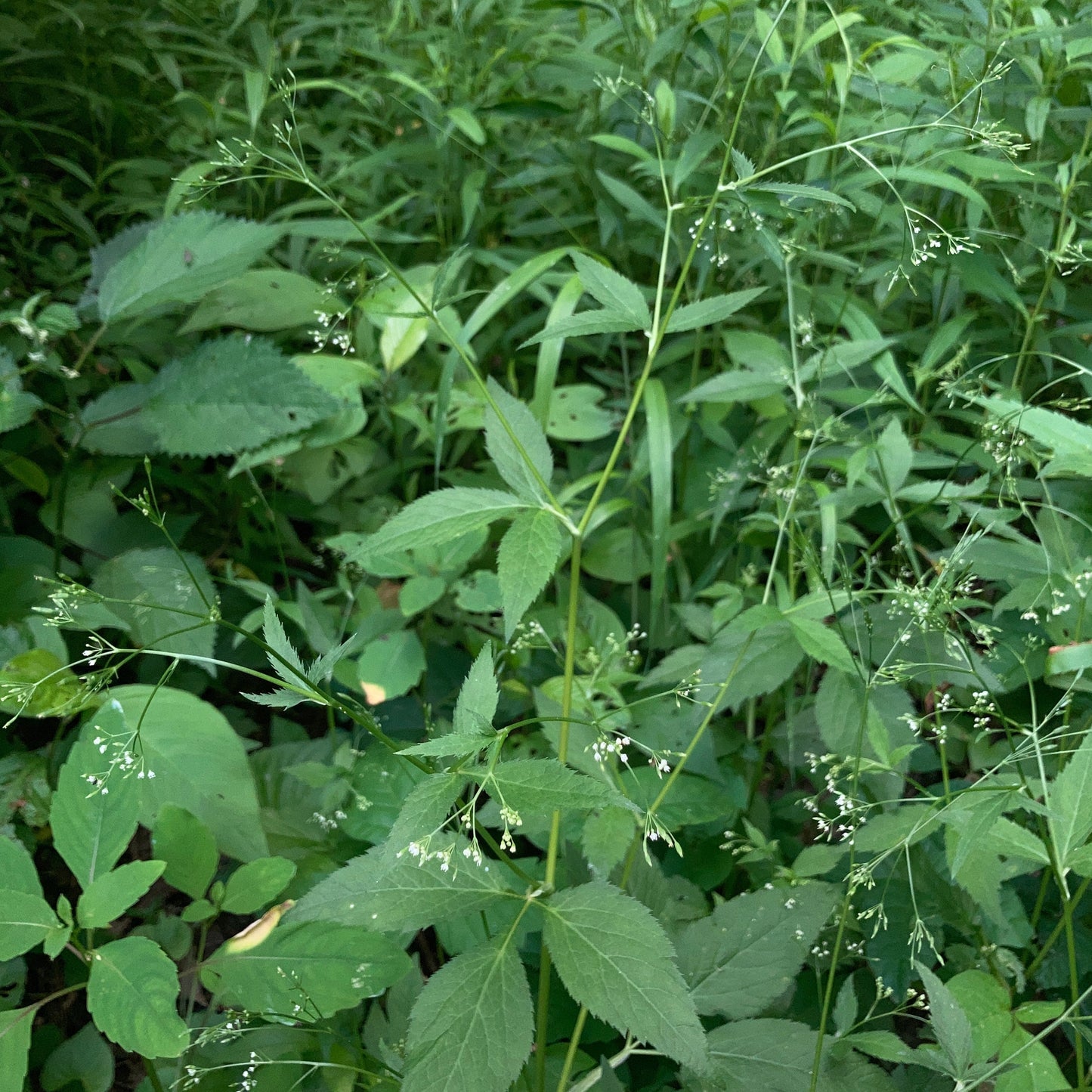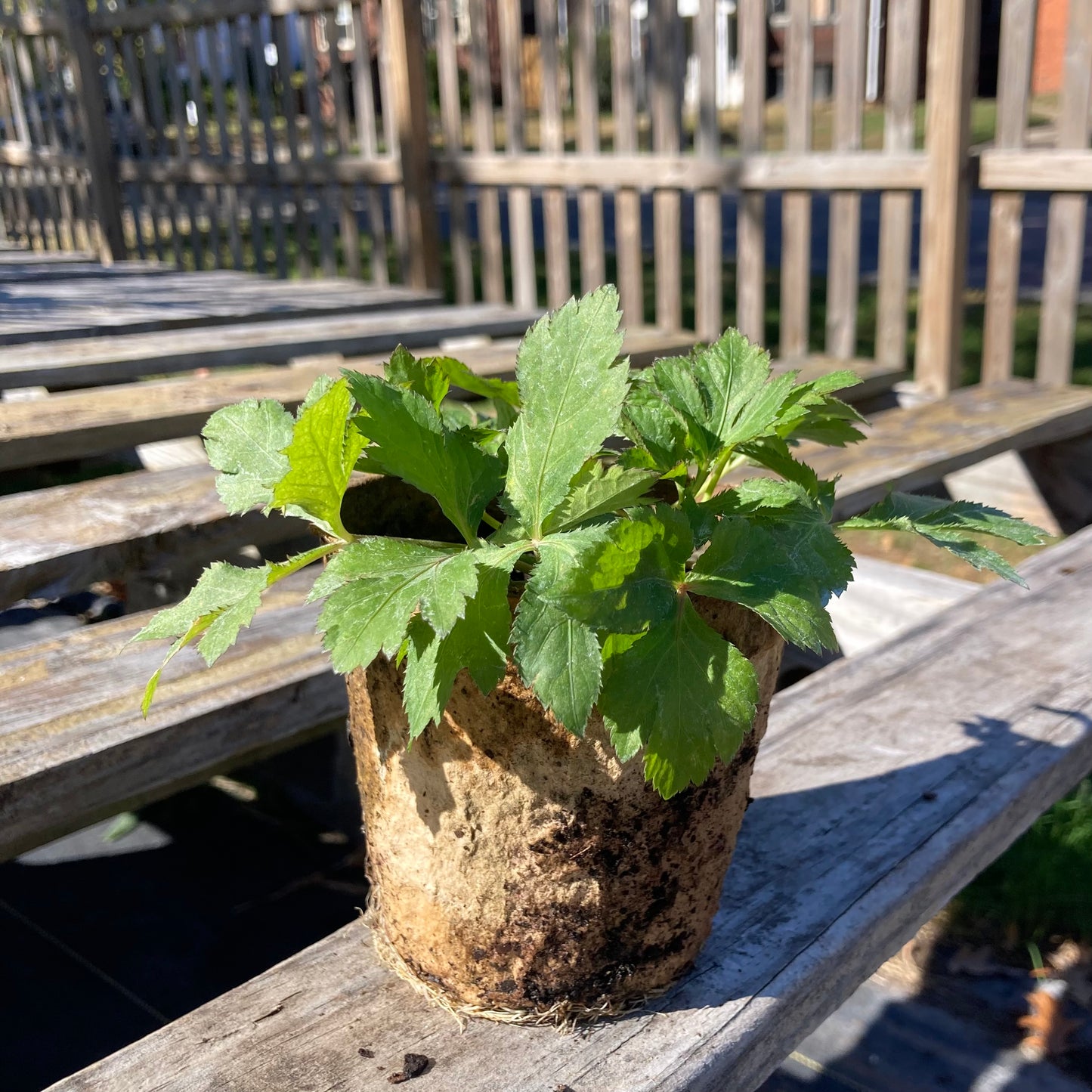Honewort
Cryptotaenia canadensis
Cryptotaenia canadensis
4 remaining
Couldn't load pickup availability
Sun/shade: Part to full shade
Soil moisture: Medium to wet
Height: 2.5'
Flowering period: June
Deer resistance: High
In the uneven light of the forest, honewort’s delicate sprays of tiny white blooms lend an ethereal twinkle to a summer day. The plant has a tendency to form dense colonies via self-seeding, and in moist woodlands – especially along streams – it can be one of the most dominant forest herbs.
Growing to approximately 2.5 feet in height, honewort can be utilized for garden borders or for filling in bare areas, but due to its fairly non-showy flowers it is best suited for naturalistic settings. The plant is especially useful for adding an accent of white color to shade plantings, which can often be lacking in midsummer-blooming flowers. In areas of partial shade, pairing with wild basil, another low-growing herb, creates a subtle pink and white mix during the month of June. To limit honewort’s spread, simply cut off the flower clusters after they have withered but before the seed has formed.
In terms of wildlife value, honewort supplies nectar to numerous short and long tongued pollinators, including small and large bees, hover flies, tachinid flies, wasps, beetles, and others. The plant’s foliage is also a food source for caterpillars of the gorgeous black swallowtail butterfly. To support the lifecycle of black swallowtails, gardeners can also plant another caterpillar host, golden Alexanders, as well as the adult butterfly’s favored nectar plants, which include milkweed species, buttonbush, dense blazing star, and tall ironweed.
Photo by Julie Slater.



